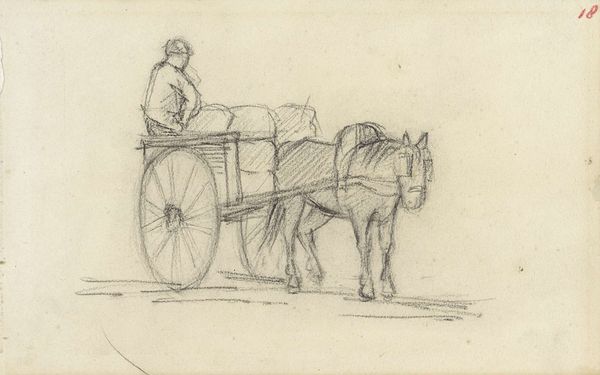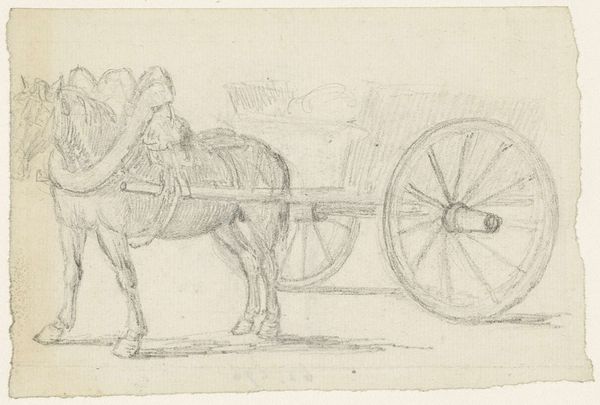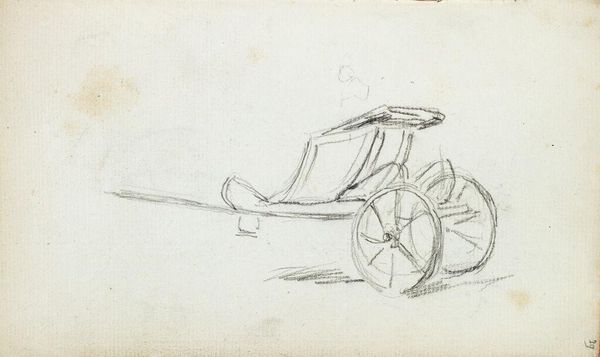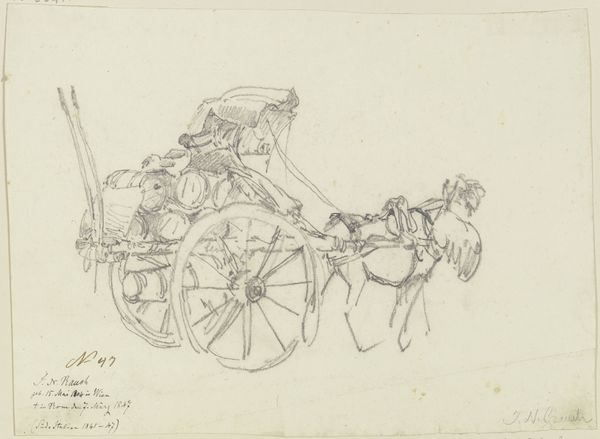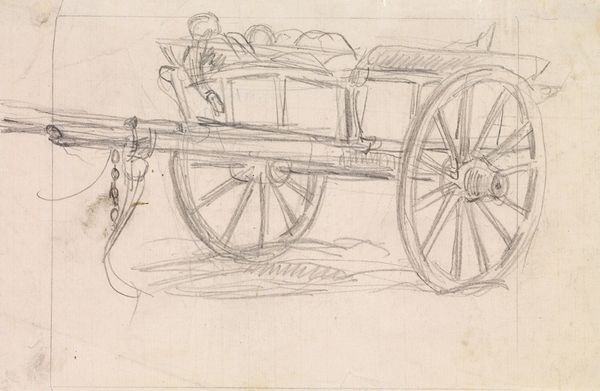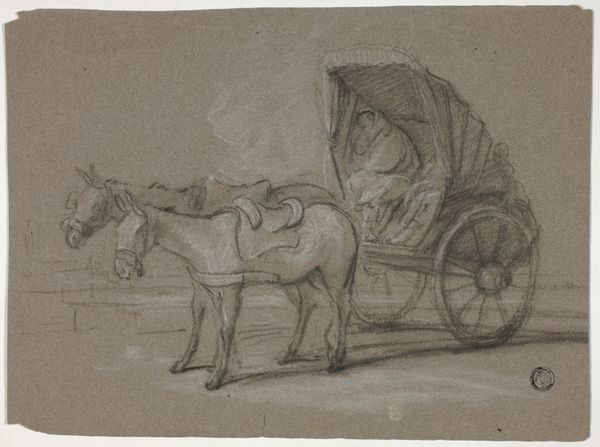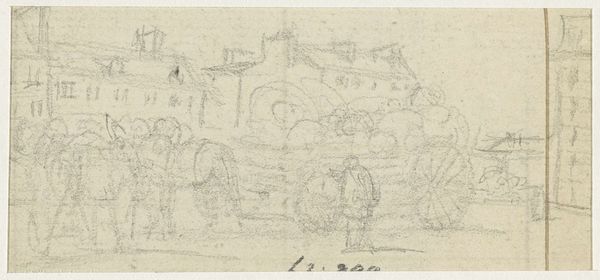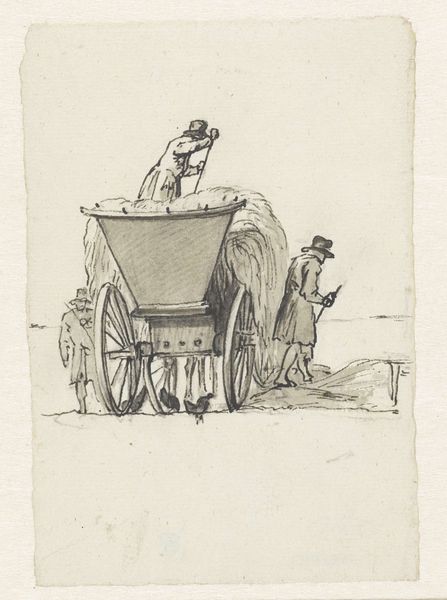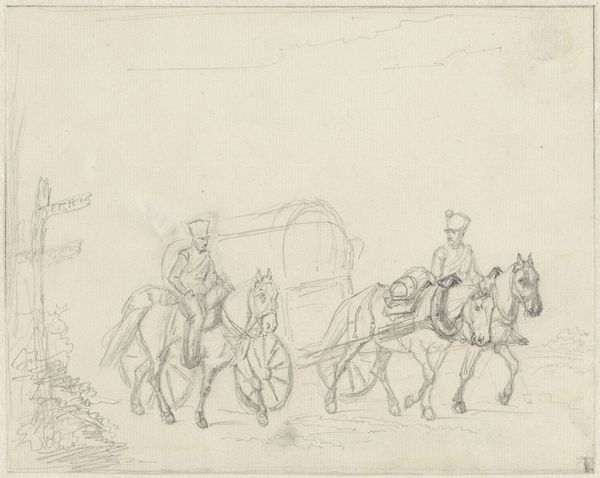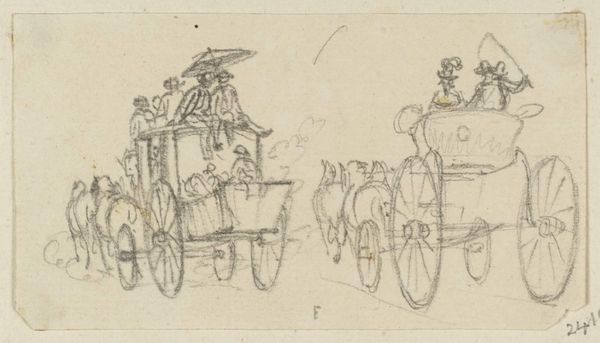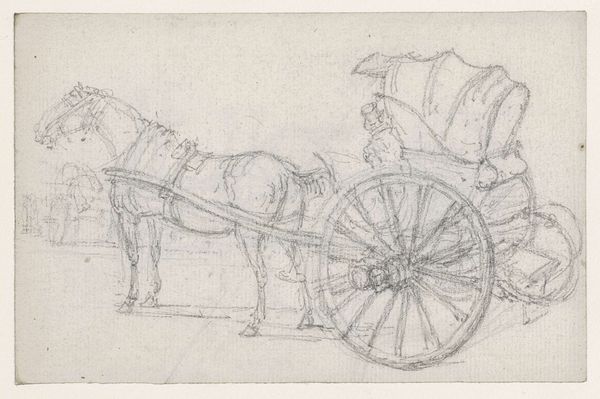
drawing, pencil
#
drawing
#
dutch-golden-age
#
landscape
#
pencil
#
genre-painting
Dimensions: height 67 mm, width 142 mm
Copyright: Rijks Museum: Open Domain
Editor: This is "Two Horses Eating by a Cart," a pencil drawing made around 1647-1648 by Harmen ter Borch. It's at the Rijksmuseum. I’m struck by how casual and seemingly unposed it is. What do you see in this piece? Curator: The unassuming nature of the piece is precisely its charm! Think about the symbolic weight animals, especially horses, carried then, representing labour, status, and even freedom. This isn't a formal portrait; it captures a momentary pause. Consider how the simple act of eating becomes imbued with meaning in Dutch Golden Age art—often representing simple pleasures and earthly needs. Do you get a sense of everyday life from it? Editor: Definitely, it feels very ordinary. But how does that everydayness connect to deeper symbols? Curator: These horses are unburdened, relaxed. This freedom from toil might evoke a sense of prosperity, a common theme in Dutch art reflecting the burgeoning merchant class and their values. Eating is survival, of course. Look how their heads meet over the feed; is this closeness intimate and affectionate or competitive? Or is it both at the same time? Editor: It could be both! I hadn't thought about the "prosperity" angle at all. Curator: It's a glimpse into a specific time, encoded with social and cultural information. What feelings does this relaxed scene bring to mind for you now, divorced from the 17th century? Editor: I think it makes me feel grounded. It’s a reminder that life is happening in these little moments, whether it’s the Dutch Golden Age or now. Curator: Precisely. The symbolic power persists because it resonates with our human experience across time.
Comments
No comments
Be the first to comment and join the conversation on the ultimate creative platform.

